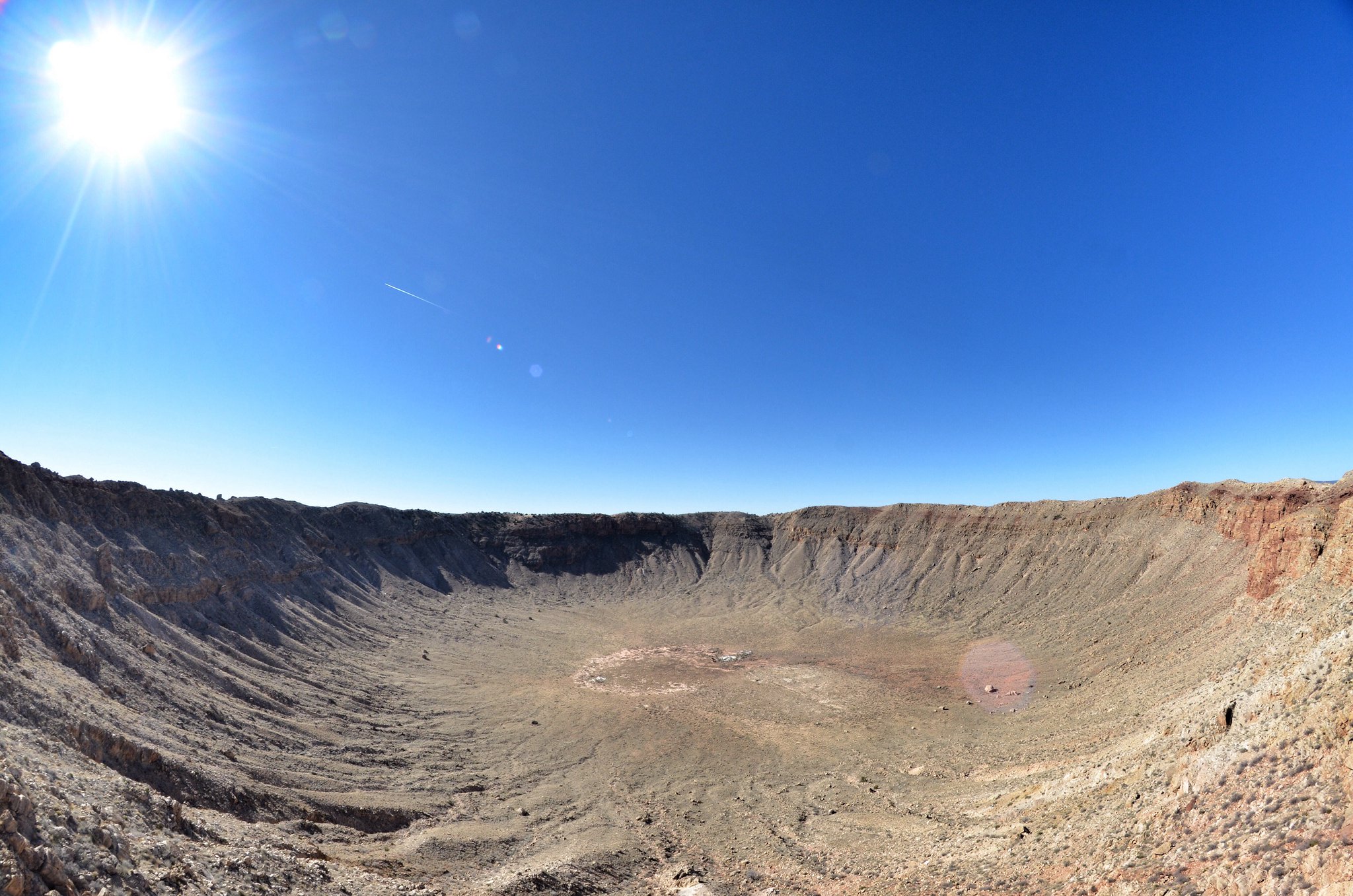We managed to get a view through the 24" Clark Refractor (pictured below) of Jupiter, after lining up for about an hour in the cold. It was simply stunning! The seeing was very good that night, and we could see a clear image of the Great Red Spot, the planet's wispy cloud bands with intricate detail and the four Galilean moons. I could even see detail within the GRS itself, different shades of red. It's the best view of Jupiter I have ever seen, and dad was pretty much blown away by it as well. I'll drag my 12" Lightbridge to check out Jupiter again soon, but I know it won't be the same!
We also had the chance to visit the impact crater near Winslow. The views of the crater from the observation decks were terrific, and they have a splinter chunk of the asteroid/meteor that caused the impact on display to touch and examine more closely. It felt like pure iron or metal, and gave you an eerie sense of the damage a really large asteroid of this nature could cause if it impacted our planet. Well worth a visit if you're up that way!
Hopefully I'll have some more astro-images to share soon as the warm, spring nights take hold here in Texas.

















